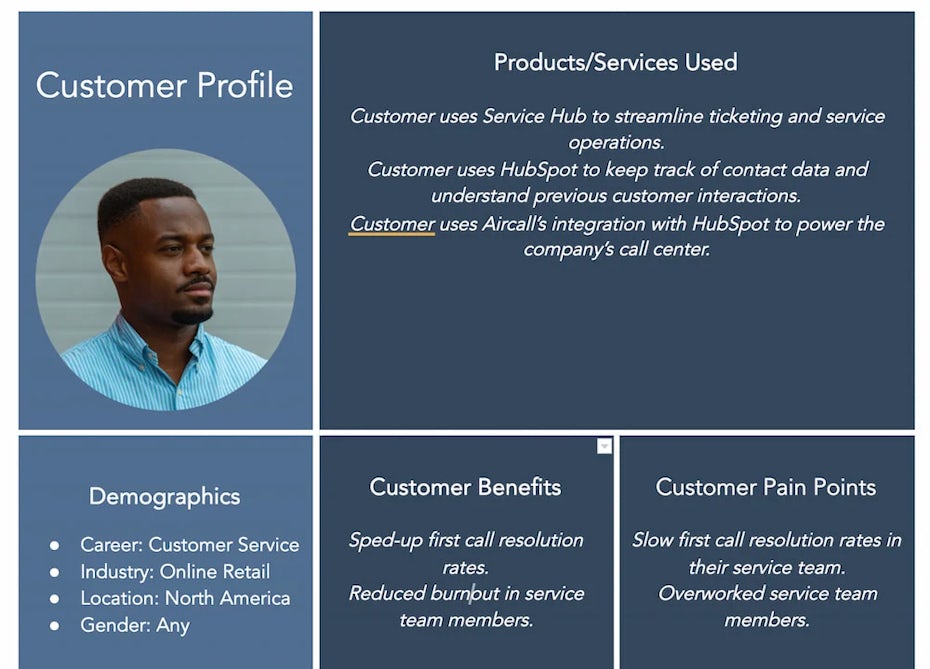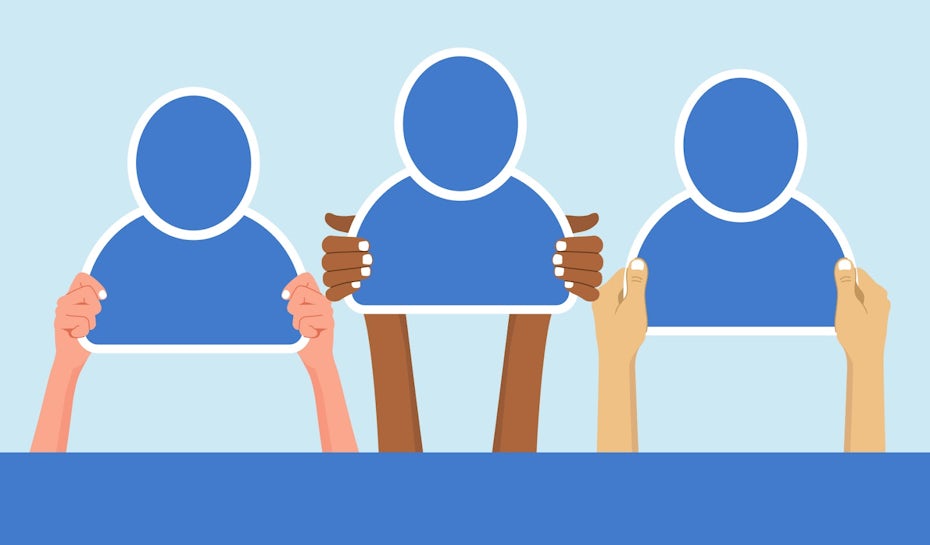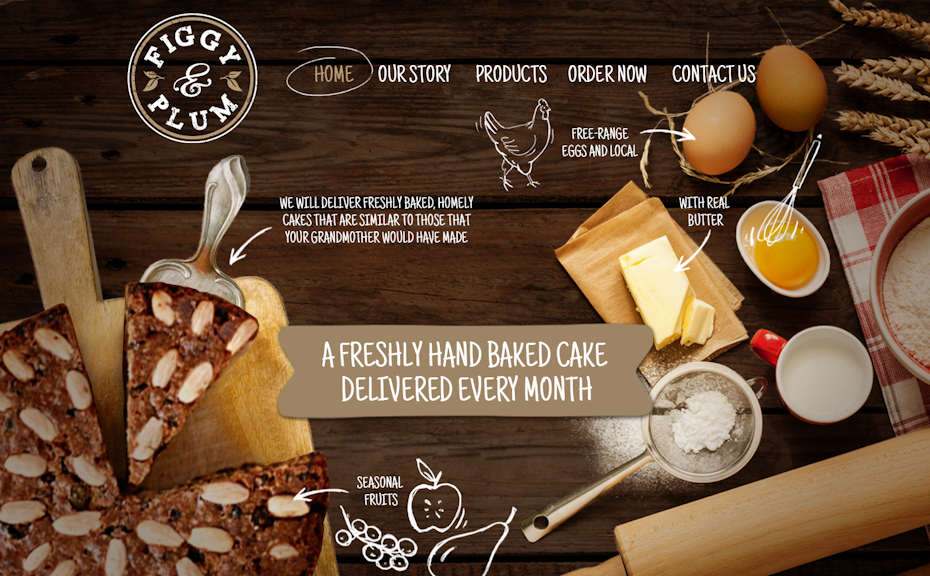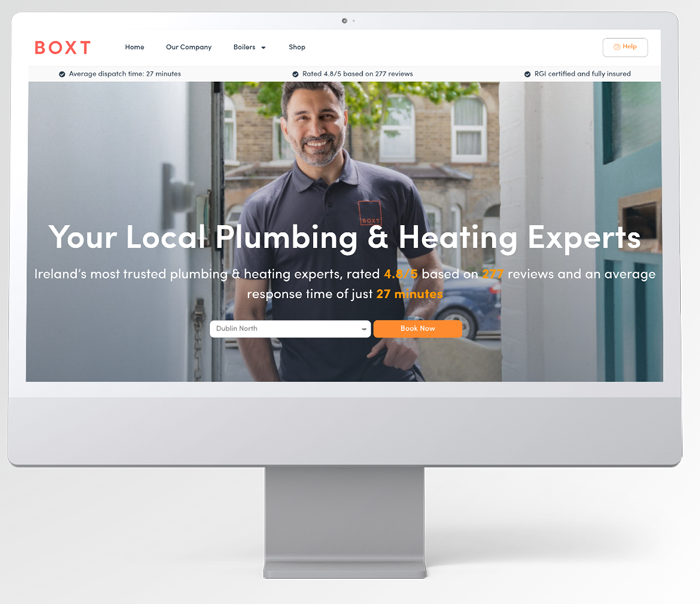There are so many things to think about when you’re first launching a business—and lots of unexpected costs along the way. Branding can be expensive, but it doesn’t have to be! You can create aspects of your branding, like an impactful brand identity while on a budget.
One of the best ways is by doing as much as you are able yourself, rather than outsourcing it. That being said, time is valuable, especially when getting a new business off the ground. It’s important to know when to spend some money on tools that will streamline the process or outsource some of the work you feel like you need help with.
To help you out, we’ll start by talking about what branding is and why it’s important. Then, take a look at 6 tips for branding on a budget.

What is branding?
—
Branding is everything your potential customers see and interact with, and what differentiates you from your competition. It encompasses the written tone on your website, product packaging and social media posts, your social media presence, which ones you use, how often you post, how interactive you are, and the visual look of your brand that’s made up of your brand colors, fonts and logo.
It’s important to be thoughtful in the choices you make, as branding is the first impression people have of you.
Read more about branding here >>
Why is branding important?
—
Branding helps you build a relationship with your ideal customer. It’s how you share what you’re passionate about, talk about what makes you stand out from others and create brand recognition.

Think about different water options you might see at your local grocery store. Arguably, each water brand sells a similar product. However, by having unique packaging, colors, names, logos, and brand personas, different water brands often cater to different customers. Many water brands have a specific persona and presence. For example, some brand themselves as “filtered,” others as more “affordable,” while yet others have a “natural” or “pure” focus.
If you find yourself questioning how important investing in branding really is, listen to what other business owners have to say. A survey we at 99designs by Vista conducted found that the majority of small business owners (78%) believe visual branding significantly contributes to revenue growth, with 84% claiming it helps attract new customers and 88% reporting it plays a significant role in building customer trust1. Bottom line: you can’t afford not to invest in your branding.
6 tips for branding on a budget
–
1. Build an ideal client profile
Your product is probably tailored to a specific type of person. So who are they? Would they rather go for a long hike or sleep in on a Saturday morning? Are they retired or are they just heading into university? As you answer these questions, you’ll start to notice a person taking shape—that’s your ideal client. Go ahead and write everything down in a one to two page document titled “Ideal Client Profile.” Or, even better, give them a name! Keep this ideal client in mind, and reference back to your document, throughout the rest of the branding process. Here are some questions your ideal client profile should answer:
- What is their name, age, and place of residence?
- What are their pet peeves that you should be aware of? (Websites that lag, apps that don’t have detailed graphics, not being able to reach a customer service representative on the phone…)
- How is your product improving their quality of life?
- What are their core values?
- How will they use the product?

If you have several key demographics you’ve designed your product for, make a separate ideal client document for each one. This way, you will be able to see the key similarities and differences between your target audiences and help you prioritize the audiences you need to tackle first.
So many decisions become simpler when you can ask yourself, “I wonder how Jarvis would feel about that?” Or, “I think Amber would be more drawn to this color palette.”
Remember, you can still do business with people different than your ideal client profile describes. This isn’t meant to be limiting. Rather, it’s a helpful tool as you move forward and make more decisions like which social media platforms to focus on and what types of design elements to choose.
2. Create your brand’s visual presence
Logos are an important visual component of a brand. In a survey of 2,000 Americans, 42% said they believe the logo shows the brand’s personality, 40% the type of product provided, and 39% think the logo correlates to the quality of the brand.
Almost one out of every five Americans surveyed judged the quality of the product based on what the logo looked like. Don’t undervalue the importance of the logo! Your logo is an important part of branding, so this is one of those areas where you may choose to spend some of your budget to hire a professional or invest in tools that will simplify the process. Here are some options to consider:
Free to $50
- Use a logo maker
They are affordable and easy to use. Though some downsides are a lack of distinctiveness and no input from a designer. Before getting started, learn more about logo makers and what to expect. - Do it yourself
If you have an eye for design (or a bit of experience), you can opt to design the logo yourself. Download free fonts from sites like DaFont or Font Space. Then, use a design platform like Canva or Adobe Express to create your logo.
Designing the logo yourself will typically take longer than using a logo generator, but the end result will probably be more unique as many logo generators can look generic.
Check out our ultimate guide to logo design >>

$300 to $800
- Hiring a designer
If the thought of designing your own logo stresses you out, you can always find and hire a freelance designer to help you out through the whole process. The cost of a freelance designer can vary, so always make sure to get a quote from a few designers to find the right fit for your style and budget. - Holding a design contest
A design contest lets you see logos from a range of designers, which can be especially helpful if you only have a general idea of what you want it to look like, but not a specific design in mind for the final logo. During the contest, you can give designers feedback to help direct them and get a final product that you’re really happy with!
Learn more about how much a logo will cost >>
3. Decide on your tone and voice
Tone and voice are an important part of building a brand identity. Most simply put, voice is your brand’s personality while the tone is how you express your personality. And this is another area where you can outsource the work to someone who will help you shape it, or you can spend some time making decisions in-house to define your brand persona.

This will depend on your area of specialty and whether you want your brand to capture your tone and voice. If you are doing it on your own, here are some helping things to help you create your brand persona.
Starting with some examples of brand tone and voice you could choose:
- Friendly and bubbly
- Capable and helpful
- Professional and warm
- Informative and fun
Do you want your customers to see you as their best friend, a trusted mentor, or their cool aunt? There isn’t a right or wrong, but once you make a decision, stick with the same voice across all of your platforms. If you’re not sure how to define your voice, here are a few questions to ask yourself:
- Do I want to write with 100% correct grammar or would I rather write like I speak—use some slang and conjunctions?
- Do I want to speak in the 1st person singular and tell anecdotal stories or rely more on research?
- What handful of adjectives do I want my client to use to describe me? (fun, knowledgeable, quirky, helpful, available, professional)
- Can I give a few concrete examples of work on the website, product descriptions, or blog posts that I love and think do a great job of capturing the brand voice?
Use these answers to help you stay consistent with the written content on your website, across social media platforms, newsletters, product packaging, and any other writing.
4. Have a plan for social media
Social media is an inevitable part of the branding landscape. It’s an easy way to interact with potential clients and share your vision. Many companies hire a staff to manage social media, but with a few key tools, you can definitely manage it on your own until you’re ready to outsource the work.
The first thing is to do your research. It can also be helpful to check out your competitors to see how often they’re posting and what type of content seems to get them a lot of interaction (likes and comments). Remember to check out similar sized competitors, not just other brands in the same industry.
Also take the time to learn about the different social media platforms and where to find your ideal clients, based on user data and statistics. By doing this, you can focus your effort on platforms and that will help you reach your target audience.
Bloom and Wild, a sustainable flower store, does a great job with their Instagram presence. They post, on average, once a day. Their posts feel inviting and bright, and they use their story highlights to showcase the sustainable practices they’re using to help the world while brightening up people’s homes.


When getting started on social media, find a posting schedule that works for you. Remember, you can always start posting more later, so start off as slow as you need to. In a survey of over two-thousand social media users across the US, UK, and Ireland, 74% said they felt they felt brands should post 1 to 2 times per day. There are a ton of social media management tools that can help you schedule and manage your social accounts, as well as analyze performance and design posts.
For creating quality social media content, use can use various design tools to help you design cohesive and creative content. Each platform has its own pricing structure and features that change from time to time, so be sure to check those details in order to find the one that best fits your needs and budget.
5. Build your newsletter
Newsletters are an important part of your branding strategy. At the end of 2021, there were an estimated 4.1 billion global email users, making it one of the most used means of digital communication.
Newsletter recipients are more dedicated customers than most social media followers—they’ve agreed to give you their email addresses and receive direct communication from you! Use your newsletter to nurture relationships with clients and generate sales.
Most newsletter services have free plans for up to a certain number of subscribers which is great news for SMBs and entrepreneurs who are just getting their newsletters started!
Here are some good options for online platforms that are easy to use for building a newsletter:
- Mailchimp—free version has a monthly email send limit of 10,000
- Convertkit—free version for under 1,000 subscribers
- Sendinblue—free version allows 300 emails per day, unlimited contacts
But even once your mailing list grows large enough to need a paid subscription, most people agree that it is worth the investment.
It can be challenging to know exactly what the ROI (Return on investment) from email marketing is, but in 2019, DMA (the UK’s Data and Marketing Association) conducted a survey of over 2,000 British marketers. They reported that the ROI for email marketing was £42 for every £1 spent. Litmus, a US based email marketing platform, conducted a survey with over 2,000 marketers in 2021 and reported a $36 USD ROI for every $1 USD spent.
Make sure to maintain an ethical approach when collecting people’s information. Always be transparent and allow users to unsubscribe. Most importantly, don’t spam!
6. Design your website
Once you’ve got colors, fonts, a logo, voice and other aspects of the branding figured out. Use all of that to make sure your website looks cohesive and represents you well.
Hiring a web designer, while very helpful if they’re within your budget, can easily cost a lot of money. Thankfully, there are lots of website builders that make it possible for people with no coding background to put together a customized, beautiful website.

Take some time to figure out which website builders will fit your needs best. The price can typically range between $100 to $300 annually for using the service. Most website builders have various “levels” of membership you can choose from. More expensive monthly packages will often include additional features like more pages, the ability to remove the watermark and access to more design features.
On the more expensive end is working with a freelancer. With a freelancer, your website will be more unique and customized than if you use a website builder. The process is more collaborative. And the range of cost comes from several factors like the experience of the freelancer, the number of pages you need them to design and the complexity of the design. The best thing to do is to ask for quotes from various web developers to find the right fit for your needs and budget.
Things to remember
_
When branding on a budget, remember to be smart about where you spend your money. Affordable branding is about finding the balance between when to do things yourself and when to hire a freelancer and save yourself some valuable time. But also, have fun! Branding is your opportunity to tell and show people what you’re all about! Let the love for your craft and the excitement you feel as you begin to see things come together show through.
1. Data collected via online research firm Corus in June 2022 from 1,061 decision makers from small businesses with no more than 100 employees across North America, the UK, Australia and New Zealand.↩
Need help branding your business?
Our global community of professional graphic designers can do that.
This article was originally published in 2022. It has been updated with new examples and information.
What Is Brand Identity? And How to Develop a Great One.



